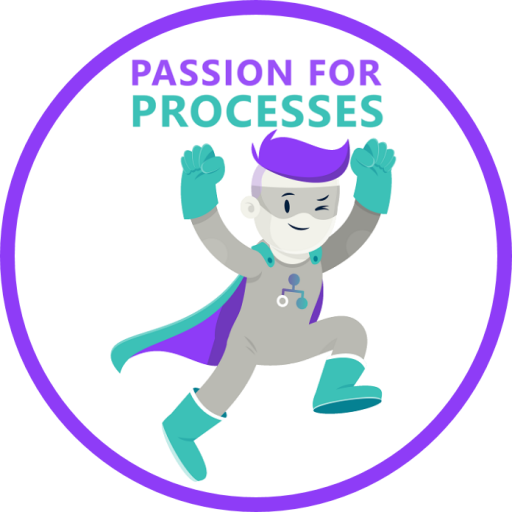
Hello,
I was hoping to get your advice on the topic of capturing projects/initiatives in ARIS Cloud. Within my organization, management would like to use existing ARIS business process models (level 4 - Enterprise BPMNC ollaboration Diagram) and show tasks within those processes, that are impacted by some ongoing projects/initiatives (not utilizing task attribute, but by adding seperate object - easy to spot while looking at the whole level 4 model). In essence, desired result is to be able to diplay a current business process, enriched with all projects/initiatives visible as objects next to each impacted task (ideally with full name of project/initiative displayed on mouse-over or as result of clicking on each project/initiative object). Would you be able to suggest a way of effectively adding this type of details to business process model in ARIS, while staying in line with BPMN 2.0 modeling convention?
Thanks a lot in advance,
Kamil
Hello Kamil,
I will try to sort out the methodical question first. A project is a process, that is set up and executed just once. What you do in the project is unique. That's why you would not typify projects as a process and model it. However there is an object type "Task" that represents just that: A function that is executed just once. It can be used in EPC. And there is also a symbol "Project" of object type "Task". One way of modelling your projects could be in this fashion:
This example is a "Task allocation diagram" from United Motors group. Your project or task sits at the center and on the right you have functions from your BPMN processes. Feel free to use the BPMN task symbols for better recognition by the useres. A possible connection type is "within the scope of" between the process step and the project. This diagram is useful to connect a lot of other resources touched by the project, like application systems, org. units, project managers in this example.
Regarding your requirement "adding this detail to the process while staying in line with BPMN 2.0 modelling convention" is like saying "wash me, but don't wet me". Either you want to see it, then you leave the BPMN standard, because the standard does not know projects or other resources of your business, or you connect the projects in a different way.
So these are your options:
- You add project symbols to your BPMN collaboration diagrams and connect them to your process steps. This is possible since SR12, if you configure it in your method filter.
- You add the projects to Function allocation diagrams of the process steps. This has been possible since medieval times (ARIS 7.2 at least)
- You configure content type modelling for your BPMN processes and use the Project/Task as a content type linked to your BPMN tasks. This is possible since SR14.
- You flipside the view and have a project member model something like the "project allocation diagram" (for your purpose I would derive such a model type from the task allogcation diagram) I showed above. This has got advantages for the governance: The project is responsible for their scope and you don't change the process until it's time to rollout the project result. Reporting can still show you the projects affecting a certain process. Also consider fact sheets for process steps in the portal view, which could show the relationships to the projects, even if you don't have them in the proces diagram.
Here is one more clarification regarding the term "Task".
In BPMN a "task" is a typified activity, that is executed each time a certain type of process is executed. In ARIS BPMN "tasks" (Service tasks, human tasks, manual tasks, sub-processes, call activities...) are represented by objects of type "function".
In ARIS we distinguish between processes, which are executed frequently - e.g. Business processes, where the goal is to repeat them many times and therefore model them for everyone to know how to reproduce quality - and processes, which are executed just once - these are projects and their component activities.
Repeatable processes are modelled using a hierarchy of "functions" (e.g. Value-added chain, BPMN processes), while one-time processes are represented by a hierarchy of objects of type "task", e.g. Programme, Project, Task.








